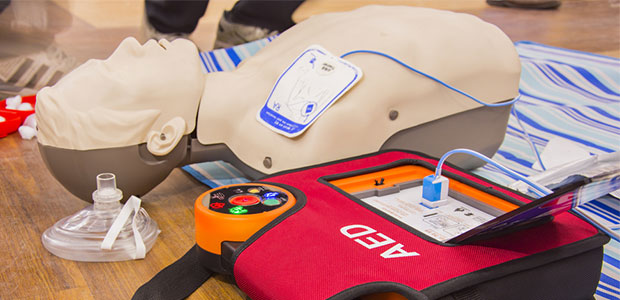
Creating and Implementing an AED Program in the Workplace
The chances of survival increase dramatically when a workplace is trained in both CPR and the use of an AED.
- By Sydny Shepard
- Oct 01, 2021
There are many injuries and illnesses that can occur on the job if adequate safety precautions, policies and procedures are not put in place. While many of the articles in this magazine will highlight hazards that result in injuries to extremities, respiratory systems or vision, there are still some health issues that can arise at work that might not be entirely job-related, for example: sudden cardiac arrest.
What is a sudden cardiac arrest? Well, it is easy to get this confused with a heart attack, which is when blood flow to a part of the heart is blocked, but it is different. Sudden cardiac arrest is the abrupt loss of heart function, breathing and consciousness, according to Mayo Clinic. The condition usually results from a problem with your heart’s electrical system, which can disrupt your heart’s pumping action and stops blood flow to your body.
Sudden cardiac arrest may stem from health issues that are not entirely job-related. Common heart conditions such as coronary artery disease, enlarged heart, valvular heart disease and electrical problems with the heart can result in sudden cardiac arrest, but even people with no heart disease at all can find themselves in a position where they begin to suffer a sudden cardiac arrest.
You may think sudden cardiac attacks happen pretty infrequently, but you would be wrong. According to the American Heart Association, there are more than 356,000 out-of-hospital cardiac arrests annually in the U.S. and nearly 90 percent of them are fatal. It is estimated that of those out-of-hospital cardiac arrests, the survival rate of the victims increases exponentially if the people around them are trained in CPR and the use of AEDs compared to just CPR alone.
While it is pretty commonplace for workers to have received training on CPR at least once in their lifetime, it is less common for someone to have received training on the use of AEDs. In this article, we will talk about AEDs in the workplace: training workers to properly use them and creating an effective AED program that will dramatically increase the survival chances of a worker at your facility who might find themselves suffering from a cardiac arrest.
Frequently Asked Questions
Before we jump into creating and implementing an AED program in your workplace, let’s first answer some of the most common questions associated with AEDs.
This article originally appeared in the October 2021 issue of Occupational Health & Safety.